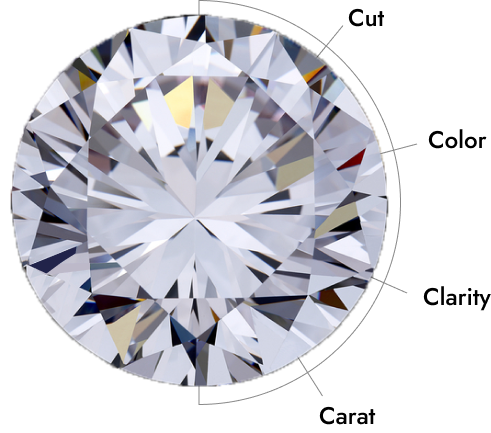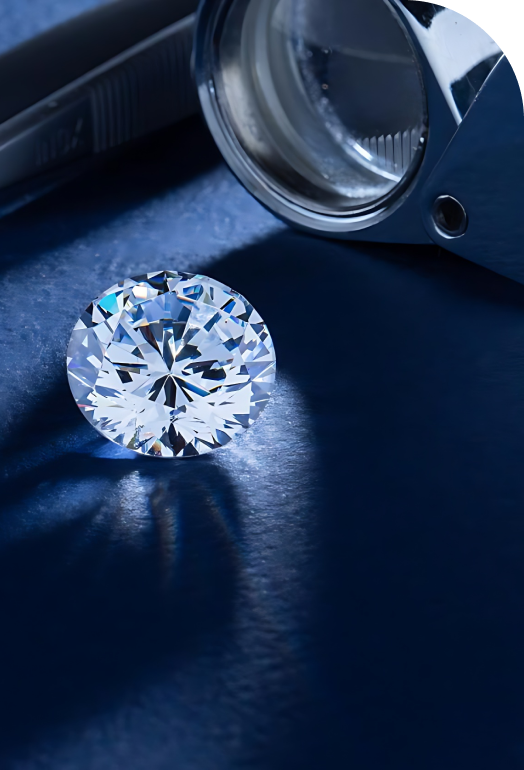The 4C's: Unveiling The Beauty And Brilliance Of Natural Diamonds

In the realm of diamonds, each precious stone possesses a captivating tale, making it truly one-of-a-kind. At Davariya Brothers, we pride ourselves on imparting knowledge to our esteemed customers and guiding them through the world of natural diamonds we offer. Today, we embark on an enlightening journey to unravel the mysteries of the 4C’s, the universally acclaimed standards that define the quality and allure of a natural diamond. Join us as we delve into the exquisite facets of cut, color, clarity, and carat weight, illuminating the unparalleled beauty of these remarkable gems.

What Exactly Are 4C’s Of A Diamond?
The 4Cs of a diamond are the cornerstone of its exceptional quality. When we talk about the 4Cs of a diamond, we are referring to the four main characteristics that determine its quality and value. These four essential characteristics – cut, color, clarity, and carat – form the basis for evaluating a diamond’s value. Each of these factors plays a crucial role in assessing a diamond’s overall beauty and desirability.
The Gemological Institute of America, in 1953, introduced a groundbreaking system that revolutionized the evaluation of diamonds worldwide. This system established an internationally recognized standard to assess and understand the unique characteristics of diamonds. Today, it continues to be the benchmark for evaluating the qualities that make each diamond truly exceptional.
Davariya Brother 4C’s
Cut: The Artistry that Unleashes Radiance
The cut of a diamond is paramount to its breathtaking beauty, defining its ability to sparkle and captivate. It encompasses precise angles, proportions, facets, symmetry, and meticulous finishing. Evaluated on a scale from Ideal to Poor by the GIA, an Ideal or Excellent cut signifies impeccable craftsmanship that maximizes brilliance and fire. A diamond’s cut also determines its interaction with light, influencing its brightness, fire, and scintillation—the mesmerizing play of colors and flashes.
The cut of a diamond is often considered the most crucial aspect, as it determines the stone’s brilliance, fire, and overall visual appeal. Skilled artisans meticulously shape each diamond, carefully crafting its facets to optimize light reflection and refraction. From the classic round brilliant to the elegant princess and the unique marquise, different diamond cuts showcase distinctive characteristics and enchanting sparkles.


Color: The Captivating Spectrum of Hues
Natural diamonds come in an array of enchanting colors, ranging from colorless to various shades of yellow and brown. The color of a natural diamond is a key factor that determines its value and rarity. While most diamonds may appear colorless to the average observer, they often have subtle tones of yellow or brown. The closer a diamond is to being colorless, the more valuable and sought-after it becomes. The Gemological Institute of America (GIA) grades natural diamonds.
However, diamonds can also occur naturally in a wide array of captivating colors. These rare and exceptional “fancy” colored diamonds are highly valued and graded on a separate color scale that describes their unique hues. While certain colors like pink, blue, and yellow are particularly prized, the absence of color, especially in white diamonds, is highly desirable. In white diamonds, the color scale starts with the letter D and progresses through the alphabet to Z.
Clarity The Window to Inner Perfection
Clarity is an essential factor that contributes to the overall quality and beauty of a diamond. The clarity in a diamond relates to the visibility of any internal or external flaws, such as inclusions or blemishes. These characteristics are like the diamond’s unique fingerprint, making each stone one-of-a-kind. When evaluating a diamond’s clarity, several factors are considered, including the size, number, position, nature, and relief of the inclusions or blemishes.
The GIA assesses clarity on a scale ranging from Flawless (no visible inclusions or blemishes under 10x magnification) to Included (visible flaws to the naked eye). With a reduction in the number and visibility of inclusions, the clarity grade of the diamond rises. Each diamond’s unique clarity characteristics add to its individuality and charm. Choosing a diamond with higher clarity means selecting a stone with fewer and less noticeable flaws.


Carat: Reflecting Size and Rarity
Carat is the measure of a diamond’s weight, with one carat equal to 200 milligrams. While carat weight is often associated with a diamond’s size, it is important to note that a higher carat weight does not necessarily indicate superior quality. The value and rarity of a diamond increase exponentially with carat weight, especially for larger stones. Selecting the ideal carat weight is a personal choice, influenced by individual preferences and budget considerations.
The carat weight of a diamond is relatively easy for gemologists to determine, thanks to advanced measuring devices. Diamonds come in a wide range of sizes, from fractions of a carat to multiple carats. As a general rule, the price of a diamond increases with its carat weight. Larger diamonds are rarer and more sought after, making them more valuable. For example, a single 2-carat diamond will command a higher price than two 1-carat diamonds combined.
Which of the four C's holds the utmost significance?

